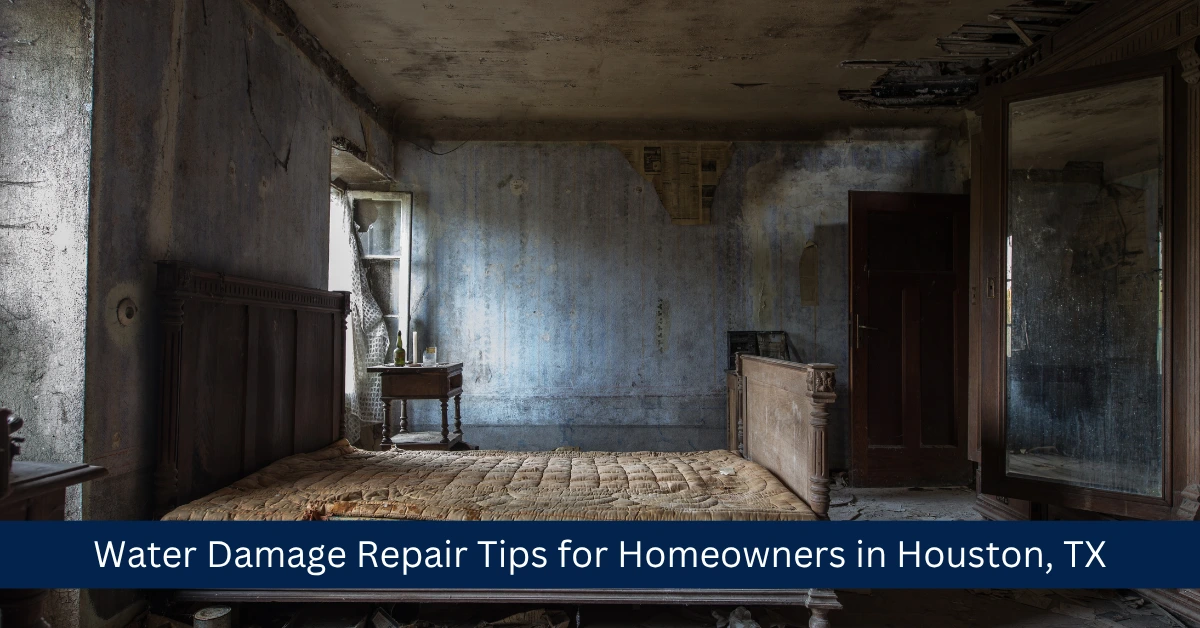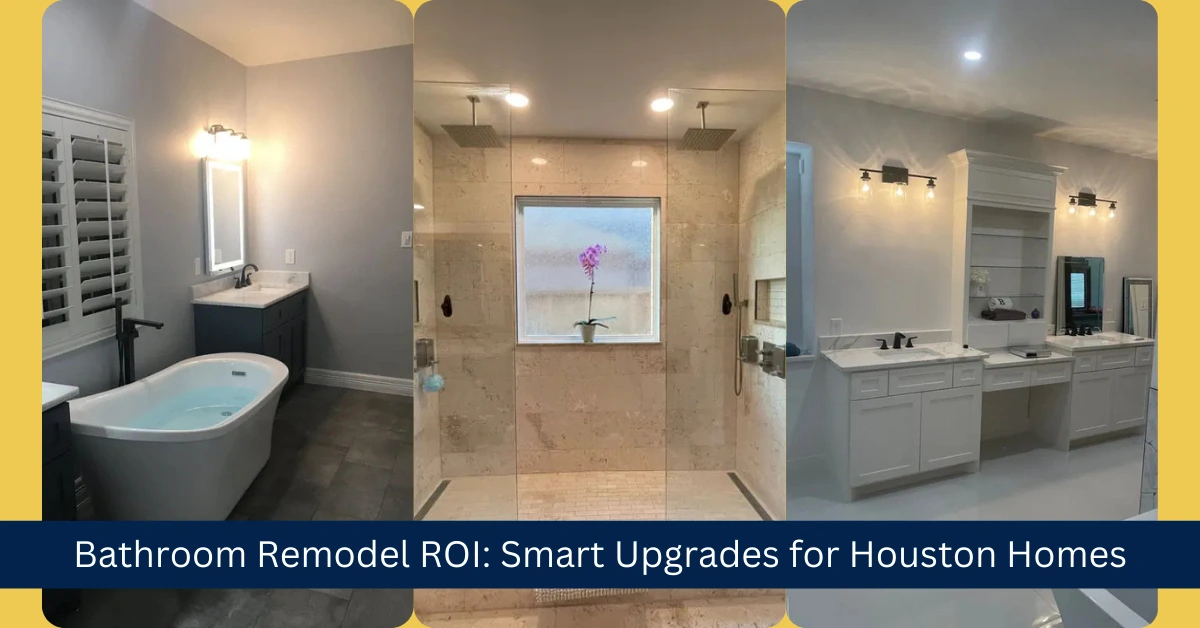Houston’s climate often faces heavy rains, hurricane threats, and high humidity. The risk of water damage stays consistent for Houstonians year-round. Let’s not get started with the plumbing leaks, leaked roofs during rain, and slow appliance leakages.
Regardless of the source, this article guides you with actionable steps to effectively manage water damage and protect your property.
Key Takeaways
|
Understanding the Risks of Water Damage in Houston
The Greater Houston area has flat topography. The neighborhoods are flood-prone, and the clay soils are expansive. Water can get into homes easily through roof leaks, plumbing failures, foundation cracks, appliance malfunctions, and storm floods.
The consequences can be heavy:
- Weakened drywall, structural wood, and damaged flooring
- Mold growth within 24 to 48 hours
- Electrical hazards from water contacting with wiring
- Permanent damage to furniture, carpets, and personal items
First Steps After Discovering Water Damage
How fast you can respond can change the result of your restoration.
Safety First
Water and electricity are a deadly combination. This combination can easily cause short circuits, and it can spark, smolder, and ignite fire. So before entering an affected area, turn off the electricity at the breaker if it is safe to do so. Wear protective gear, gloves, boots, and a protective mask.
Stop the Water Source
If the water is leaking from a plumbing problem, turn off the main water supply. Sometimes the leaks are unidentifiable at first, so it is the safer option. You can consider a tarp for a leaking roof as a temporary cover to prevent more water.
Document the Damage
Take photos and videos of all affected areas and damage as much as you can. Insurance companies need proof that a loss actually occurred. Photos and videos before cleanup are the most direct and convincing way to do this
Part 2: Water Extraction (and Drying Techniques)
The sooner you can get water out of the way, the less damage it does to your property.
Remove Standing Water
Even after the initial water splashes, the standing water keeps damaging furniture and other structures. Clear them out. If the amount is significant, use a wet-dry vacuum or pumps. Get professional help for extensive flooding.
Dry the Affected Area
You need ventilation to let the moisture out; open windows, doors, or other areas if the outside weather is suitable. Make sure to use on-par air movers and dehumidifiers to dry out the structure. Don’t underestimate the dehumidification procedure in Houston’s humidity.
Remove Wet Materials
Even if you remove the water, it can still pass on from wet surfaces. So remove saturated carpets, rugs, and furniture before drying.
Part 3: Cleaning and Disinfecting
You don’t want any water-borne diseases to spread. So, properly clean and sanitize all water-affected surfaces.
Surface Cleaning
Wash hard surfaces with a mild detergent solution. To eliminate bacteria and mold spores, you need a disinfectant. You can use a solution of one cup of bleach per gallon of water for that.
Salvageable Items
Not all wet items become unusable. Some items, like furniture and important documents, may be restored with specialized cleaning. Pick and separate them.
Disposal
Stuff like a damaged mattress or soaked drywall may not be salvaged at all. Discard them safely.
Part 4: Inspect for Hidden Damage
Water can flow easily and get into areas we can’t usually see at first. You need a thorough inspection to get an idea of the spread and how much damage it actually did.
- Look for signs of warping, soft spots, or bubbling paint on walls and floors.
- Check if the insulation and drywall are in good condition after soaking.
- Have a licensed electrician and plumber check your wiring and pipes for damage.
- Check if there are new or widening cracks in the foundation.
Part 5: Preventing Mold Growth
Given Houston’s climate, mold is the top concern after water damage.
Act Quickly
Mold can start growing within 24-48 hours. We have already touched on some drying techniques. Follow them as soon as possible for your primary defense.
Control Humidity
If you have a dehumidifier or any other appendage, set the humidity settings below 50%. Otherwise, increase ventilation, or even look for a professional.
Antimicrobial Solutions & Professional Help
Use proper cleaners and disinfectants to prevent mold growth. If you already see visible mold or have a persistent musty odor, contact a specialist immediately.
When to Call a Professional
Minor leaks don’t cause much flooding, and you can handle them independently. However, certain situations need professional care. Contact them for:
- Large-scale flooding or significant standing water
- Damage from sewage or contaminated water
- Structural repairs to roofing, framing, or foundation
- Hidden moisture or mold
Legacy Custom Home Remodeling offers a comprehensive water damage restoration service throughout Houston. Our expertise covers emergency water extraction, structural drying, mold remediation, and full-scale repairs to restore your home to its pre-damage condition. If you want a trusted service to handle your property and get it back up as brand new, contact us immediately after any leak.
Insurance and Documentation Tips
- Report the damage to your insurance provider as quickly as possible.
- Show them the photographs, videos, and inventory of damaged items that you took at the initial phase.
- Standard homeowner insurance and flood insurance are two separate things. Understand your coverage and apply accordingly.
- Keep all receipts for expenses (mitigation services, repairs, etc.) related to the damage.
Long-Term Prevention Strategies
You can take some proactive steps for water damage. The water can still damage, but the risk would be minimal, and the restoration process will go smoother.
- Regular Maintenance: Annually inspect your roof, clean gutters and downspouts, and check plumbing for signs of wear.
- Improve Property Drainage: Make sure the slope around your foundation goes down from your home. If you have a basement, consider French drains or a sump pump.
- Water-Resistant Materials: Choose water-resistant drywall, flooring, and insulation for vulnerable areas when you remodel or repair.
- Prepare for Storm: Install backflow valves on drains. Keep sandbags ready for hurricane season.
Conclusion
A good response is the most effective way to prevent further water damage and restore your home. Follow the above-mentioned steps thoroughly to prepare the best for a successful restoration.
Some repairs and structural concerns are complex in nature, especially when the flood is significant. Don’t delay reaching out to a professional during those times. Legacy Custom Home Remodeling is always here to help with quick response, professional inspection, and consultation.

Bobby Nation, a second-generation contractor with 35 years of experience, leads every project with expertise and dedication. He works closely with homeowners, guiding them through each step of the remodeling process to ensure a smooth experience and results that meet their goals.




